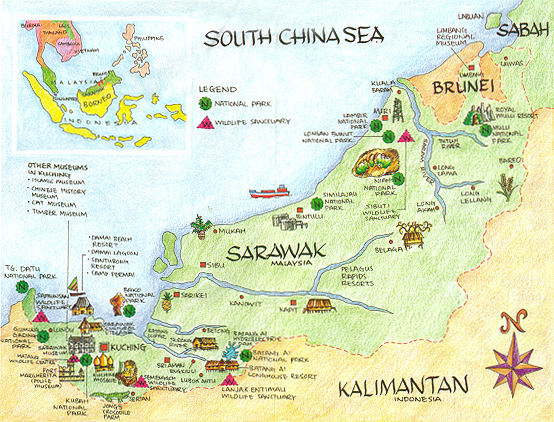Mount Santubong
About Mount Santubong
A legend often associated with the mountain is of two beautiful princesses of heaven, Santubong and Sejinjang. Santubong was an expert weaver while Sejinjang was an excellent rice tresher. When war broke out between two villages, Kampung Pasir Puteh and Kampung Pasir Kuning, the King of Heaven sent the princesses to keep peace in both villages. The villagers saw both beautiful princesses and stopped the war. After the war, both princesses taught the villagers their expertise and both villages began to trade and became prosperous. Many princes heard of them and came from the whole island to marry them, but all was denied by them. One day, a handsome prince came, and the princesses had a quarrel and exchanged blows because both of them fell in love with the prince. Sejinjang swung her tresher which hit Santubong's cheek. Santubong threw her weaver at Sejinjang, hitting her in the head. Putting an end to the quarrel, the King of Heaven cursed both of them into mountains. Santubong turned into Mount Santubong while Sejinjang was turned into Mount Sejinjang. It is said that both mountains resembles women lying on their back and a crack on Mount Santubong was the scar on Princess Santubong's cheek.












